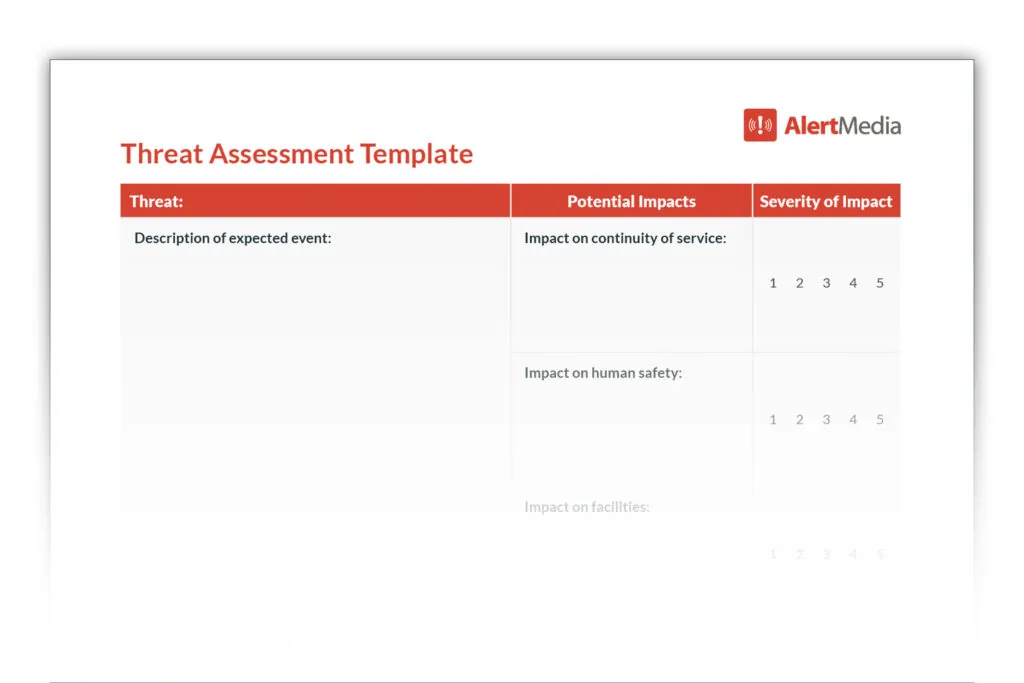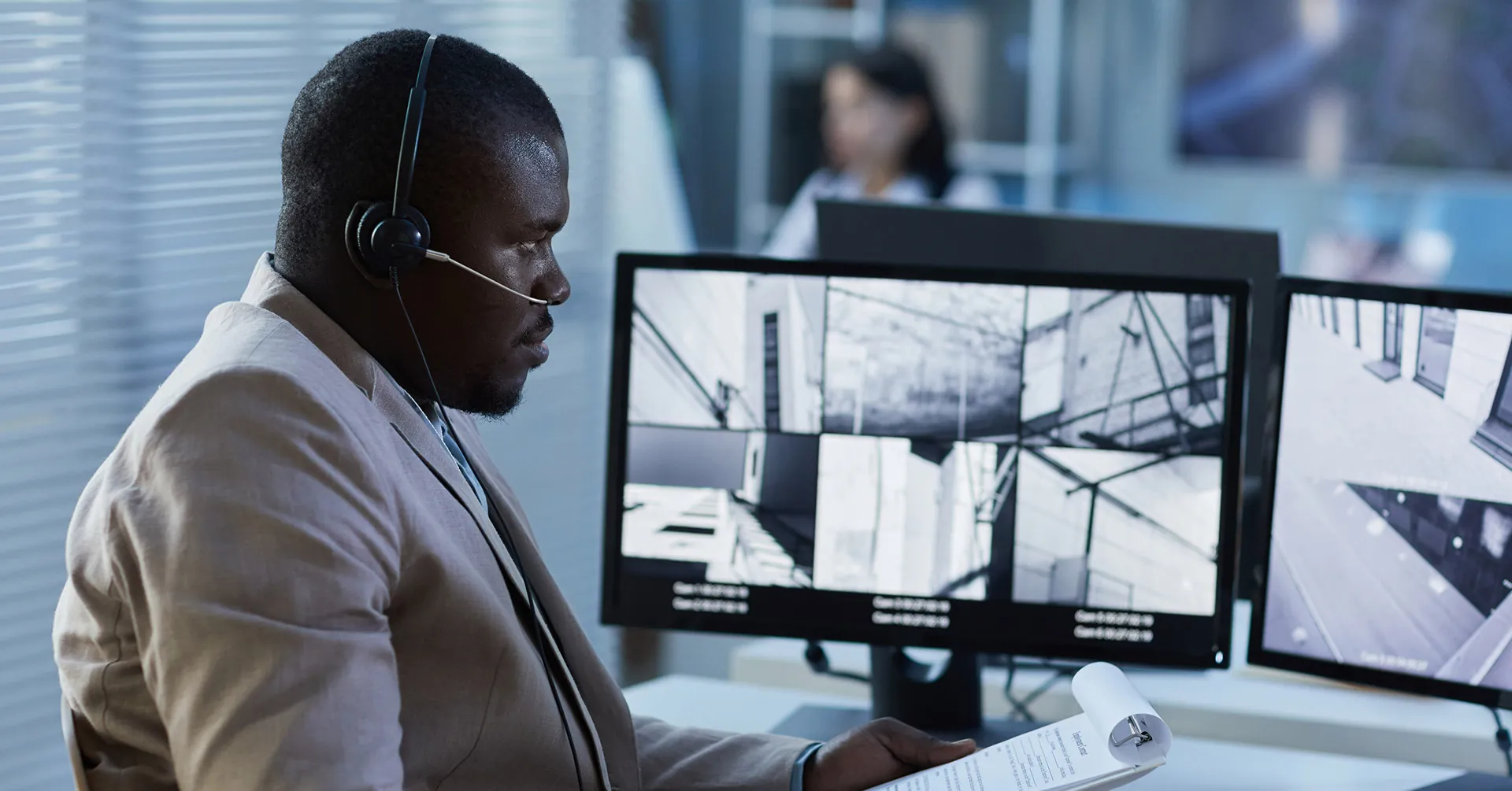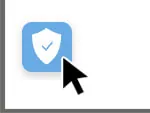
Corporate Executive Protection Planning + Strategy Examples
Your C-suite’s high profile often puts them at risk. Learn how a corporate executive protection plan can help protect them.

Corporate executives operate at a relentless pace. Brian Jantzen is an executive protection expert of over 30 years. He explains, “[A CEO] will have 14 meetings, keynotes, prime ministers, throughout one day. And then the next day, they’re moving to the next country and they’re doing it all over again.”
This constant travel can present significant challenges. “Every step needs to be optimized,” Jantzen elaborates on an episode of The Employee Safety Podcast, “including making sure that no one disrupts them from a security standpoint or from a privacy standpoint. You want to make sure that they are logistically getting from A to B to C to D without anyone disrupting their privacy.”
Beyond travel, executives face numerous day-to-day risks, from business-driven hazards to threats from unstable individuals. Protecting your corporate leaders requires a comprehensive, forward-looking plan—you cannot simply react to threats as they emerge. In this article, we’ll explore why corporate executive protection is important, the core components of an effective plan, and how to stay ahead of the threats your top executives face.
Download Our Threat Assessment Template
Why Does Corporate Executive Protection Matter?
Corporate executive protection (EP) ensures your key decision-makers are safe, productive, and focused on business goals. By handling potential threats and providing security, EP removes distractions, allowing your team to spend its valuable time on strategic objectives.
Losing a C-suite leader can destabilize an organization. While your business continuity strategy may cover role replacement, it can’t replace an executive’s unique insights, institutional knowledge, and experience. Protecting your top people is crucial because it preserves your company’s strategic vision and operations. This commitment to security also builds confidence among shareholders, employees, and partners.
As with any employee, duty of care means your company has a responsibility to protect an executive’s well-being. Although your legal and moral obligations to executives are the same as those to other employees, executives typically face more risk. According to a World Security Report from Allied Universal, 42% of CSOs say the threat of violence towards executives has increased. Now that executives face higher risks, you need to dedicate more resources to keeping them safe.
What Are the Foundations of an Effective Executive Protection Program?
The two most important aspects of effective executive protection are a proactive approach and full integration of the program with corporate security efforts.
Heading off threats before they happen is a key tenet of security, and executive protection is no different. Robust emergency plans should be part of the program, but only as a last resort. Instead, focus on keeping executives out of situations that could turn into a crisis. Building multiple layers of proactive security into the plan—including threat assessments, hazard prevention, and risk mitigation—minimizes the chances of a negative outcome.
Never treat executive protection as a siloed initiative. There are certain sensitivities around EP, as staff involved are privy to highly private information. But it should be an extension of your company’s overall security posture.
Include executive protection in your corporate risk management strategies, leverage company-wide resources where it makes sense, and build specialized processes and assets on top of organizational efforts as needed.
Why Are Risk Assessments So Critical for EP?
No two executives are identical, so understanding the risks they face—and tracking how those risks change over time—is critical to keeping every CMO, CTO, and CEO safe.
A robust threat and vulnerability assessment is the first and most important step in developing your protection program. Some risks will be shared by all of your organization’s executives, but many threats are unique. And while some of them may be sensitive or even embarrassing, you need to fully evaluate risks, including:
- Previous business or personal connections who may have reason to target the executive
- How the public views their actions and position within the company
- Private information that could be used for blackmail, like financial troubles or past mistakes
- Vulnerabilities that bad actors could exploit to harm the executive, including family members
- Financial dealings and their potential impact on the threat level
Since all of these risks are highly dynamic, you need to continually monitor threats and reassess both their likelihood and impact.
Believe it or not, people close to the executive may pose the highest risk. While you’d like to think everyone in your organization shares common goals and beliefs, it’s not always the case. Perform insider threat assessments to spot internal threats to your executives before they materialize.

Preview of the Threat Assessment Template
What Does Executive Protection Program Design and Implementation Look Like?
Building an executive protection program means two main things: getting the right resources in place and creating clear procedures for how things work day-to-day.
Figuring out what resources to use for executive protection is tricky for a few reasons. First, costs can get very high very fast. Think about paying for round-the-clock bodyguards or security personnel that travel everywhere. A business impact analysis helps you figure out where it makes sense to spend.
Second, companies need to decide: handle it in-house or use third-party executive protection services? Big companies with large security teams usually find this easy. But mid-size companies with specific needs often struggle with the decision.
Ask yourself: Do we have the skills and experience to do this ourselves? Is it smart to rely on an outside company long-term? Will our executives feel comfortable letting security professionals into their private lives?
There’s no perfect answer. But talking through these questions with your executive team helps make sure everyone feels good about the plan you choose.
Another important step is creating standard operating procedures. These should connect to your company’s overall risk management approach. They need to cover the big picture goals and day-to-day protocols for your program. This includes things like:
- Which executives are covered?
- What specific functions does the plan include?
- How much access does the company have to executives’ private lives and information?
- What are the risk levels for each executive?
- How do you handle training and documentation?
- Who’s responsible for running the program?
What Are the Core Components of Executive Protection?
The five core components of executive protection are physical security, digital and cybersecurity, travel security, crisis management, and training.
Physical security
Physical security is basic but critical. If someone can’t get close to their target, it’s much harder to cause harm. For executives, this means protecting three main areas: their office, their home, and anywhere they travel. Common strategies include:
- Strong locks and physical security controls at offices and homes
- Panic rooms for very high-profile people
- Professional drivers trained to handle dangerous situations on the road
- Private jets with vetted flight crews
- Bodyguards or security teams during public appearances
Digital footprint management and cybersecurity
The digital world creates new vulnerabilities, and your protection plan needs to cover them. For example, protecting executives’ login credentials is critical. If a hacker gets into a CEO’s email or financial accounts, the damage could be massive.
But cyber risks go beyond passwords. And staying protected takes constant attention. This means:
- Making sure executives aren’t sharing sensitive details on social media, like their location or personal information.
- Monitoring for fake accounts or deepfake videos impersonating them.
- Removing their personal information from public databases and data broker sites.
- Tracking the dark web for any activity indicating a threat
- Requiring them to use secure phones and limiting what apps they can install.
Event and travel security
While events and travel are broadly part of the physical security realm, they add a special layer of risk, since your team doesn’t control the space or situation. Therefore, you may need to take some extra steps.
Compliance with ISO 31030 will cover many of your security needs for travel, but there are some other security measures you can take for events and travel:
- Visit locations ahead of time to spot risks and plan entry and exit routes
- Work with event security and law enforcement to set up safe zones
- Map out backup travel routes in case of emergency
- Create crisis plans specific to the trip or event
- Arrange secure transportation between all locations
- Use security specialists and single-use devices to protect sensitive
Emergency and crisis management protocols
Even the most thorough plans can’t prevent every threat. That’s why emergency response protocols are essential.
These protocols cover different situations. Some are lower risk, like an executive thinking someone is following their car. Others are more serious, like intruders in their home, office, or hotel. You could even face security problems at an event venue, or hackers breaking into an executive’s account.
Having clear steps for each scenario means your team knows exactly what to do when something goes wrong. The key aspects to include in crisis management plans include:
- What security staff should do
- What the executive should do (with or without security nearby)
- Who the executive should call
- Which other stakeholders need to know and get updates
Training for executives and staff
A plan is only as good as its execution. And while security staff do most of the heavy lifting, executives and their staff need to understand the roles they play. It’s important to go over expectations for routine issues with executives—for example, what not to share on social media and how to handle minor disruptions to travel and events—as well as practicing crisis scenarios.
Some companies also extend training to executives’ families, either when they’re at greater risk or frequently a part of business trips or events. While family members don’t usually go through a full program, security experts educate them on emergency protocols and basic situational awareness training.
What Are Some Examples of Executive Protection Strategies?
Executive protection takes many forms, but some key strategies include:
- Change travel routes regularly for both daily commutes and special trips
- Limit what executives post on social media to avoid sharing sensitive details
- Work with airlines, hotels, venues, and police to coordinate security
- Make sure executives only use secure, verified communication tools
- Create visitor screening policies and restrict public access to high-risk executives
- Run tabletop exercises with executives to practice emergency scenarios
The right approach depends on your industry, the individual executive, and other outside factors. For example, what works for a tech CEO might look different than what a healthcare executive needs. Threat levels also shift over time based on public sentiment and world events.
What Role Does Social Intelligence Play in Executive Protection?
Social media intelligence helps you spot threats to executives before they become serious problems.
Billions of posts go up every day across social platforms. Most don’t matter to your company. But hidden in all that noise could be warning signs of real danger. A good social media monitoring tool helps you find those warnings by:
- Tracking trends and perceptions about your company and executives
- Pulling together news from different sources in one place
- Using AI-assisted search to filter for important keywords in real-time
- Monitoring specific people who might pose a risk by watching their public online activity
How Do You Continually Improve and Future-Proof Your EP Plan?
An executive protection plan isn’t something you create once and forget. It needs regular updates to stay effective as threats change. The three pillars of continuous improvement are:
- Monitoring the evolving risk landscape
- Regularly reviewing your protection strategies
- Leveraging new technology when appropriate
Threats to your executives never stand still. Their personal lives change, bringing new risks. Your company grows or shifts direction. The world keeps moving. All of this means new threats can pop up and old ones can get worse in ways you didn’t expect.
That’s why you need to review your protection plans regularly. When you update plans, retrain everyone involved so they follow the new protocols.
Technology creates new dangers like deepfakes and sophisticated phishing attacks. But it also gives you better tools to fight back. AI and machine learning help your team process huge amounts of information and spot threats faster. Physical security keeps improving as well, with things like better alarms, access controls, and armor for rooms and vehicles.
You can’t eliminate every threat your executives face. But by constantly watching for new risks and updating your plans, you can keep them as safe as possible.




